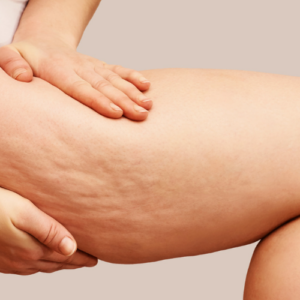
The skin is a key component in the normal functioning of your body, your skin is a huge determinant of your physical appearance.
Hence, we all desire beautiful and flawless skin. However, through no faults of their own, most people do not have flawless skin. Factors such as ageing, extensive sun damage leads to wrinkles, scarring, pigmentation, and uneven skin tones. Thankfully, there are different skin treatment plans out there that can help you with correcting skin conditions. Chemical peels are one of such treatment methods.
Chemical peels are very effective at reducing the incidence of various skin blemishes and conditions. Although the results are not permanent, via periodic treatment, you will be able to have better skin!
If you are looking to transform your skin with chemical peels, this article contains information that will help you to understand this popular skin resurfacing technique. Keep reading to know more about the procedure, cost, and possible side effects.
A brief overview of chemical peels
Chemical peels are not a new treatment plan. Modern science may have refined the procedure, but it has been in existence for a long time. History tells us that chemical peels were used in Ancient Egypt. Back then, Egyptians used acidic peels that they formulated from sour milk and fermented grapes.
Today, chemical peels have evolved. They are so much more effective than they were in the past. With research, chemical peels have become extremely useful in the removal and repair of damaged skin.
Cosmetic surgeons make use of compounds such as glycolic acid, salicylic acid, and trichloroacetic acid to remove the damaged upper layers of the skin. These chemicals achieve amazing results in the reduction of wrinkles and frown lines, skin brightening and toning. Generally, chemical peels are one of the simplest yet effective methods of treating sun damage. They are relatively safe and pose little danger of causing severe complications.
Related article: Chemical Peel Vs. Laser Resurfacing Treatments
What is a Chemical Peel?
A chemical peel is an exfoliating skin technique that involves the careful removal of the damaged upper layer of the skin. A specialized solution is prepared based on your demands and applied to your skin. This causes an exfoliation reaction that ends with the peeling of the damaged outer layers. The result is that you are left with the now exposed newer, smoother and brighter skin layers.
Chemical peels boost the production of collagen making your skin firmer, brighter and more elastic. They also remove skin discolorations, fine lines, and wrinkles.
There are different types of chemical peels with intensities ranging from mild to deep. Your medical aesthetician will be able to discuss your options with you and select a suitable treatment based on medical history and your intended skin goals.
Generally, your medical aesthetician will choose a chemical peel for you based on a few factors including:
- Your desired outcome
- The depth of penetration
- The length of estimated recovery time that you are willing to commit to
- Your health conditions
Related article: What is a PCA Chemical Peel?
Benefits of chemical peels
Chemical peels are incredibly beneficial for you. They improve the overall appearance of your skin. Depending on how intense your symptoms are, chemical peels can help in the treatment of skin conditions such as:
- Sun damage
- Ageing
- Wrinkles and frown lines
- Discolorations
- Pigmentation and hyperpigmentation
- Blotchiness
- Light scarring
- Melasma
- Crow’s feet
Related article: The Benefits of Chemical Peels
Who is a proper candidate for chemical peels?
Chemical peels can mostly be used on anyone. They are compatible for people with different skin colours, skin concerns and textures. Although, we should mention that people with lighter skin tones will get the best results.
Just like with any other medical aesthetic treatment, it is recommended that you consult with a medical aesthetician to determine the best chemical peel for you. They will be able to review your medical background and discuss any underlying medical conditions that may affect your reaction to a chemical peel.
If you have had any cosmetic work done in the past or are currently taking any medication, you have to tell your doctors about it. You should also let your medical aesthetician know if you are using retinol cream as they improve the penetrating effect of the chemical peels.
Sometimes doctors may also need to carry out physical exams to determine the viability of the area that needs to be treated. They will explore factors such as skin tone, thickness and even texture to discover the chemical peel that will be the best option for you.
In addition, it is crucial that you have realistic expectations about the results of your treatment. Chemical peels are not magic. They won’t eliminate scars or remove all skin blemishes after one procedure. However, with constant treatments and proper planning with your medical aesthetician, you should be able to achieve useful results.
You should not undergo chemical peels if you have any of these skin conditions:
- An active skin disease
- Sunburn
- Infections
- Psoriasis
- Eczema
- Broken skin
- Dermatitis
- Rosacea
Chemical peels are not recommended for people who are pregnant or are still nursing babies. Additionally, if you use skin prescription products or make use of acid-based products, you shouldn’t undergo chemical peels.
If you are looking to explore chemical peels but suffer from any of the conditions listed above, you can discuss other options with your medical aesthetician.
Types of chemical peels
There are different types of chemical peels available for use out there. They include:
- Mild Chemical peel: This chemical peel is also referred to as lunchtime peel. This particular chemical peel uses mild acids to penetrate the superficial outer layer of the skin. Superficial peels are gentle on the skin, and they mildly exfoliate to improve the overall appearance of skin discoloration and roughness. It can also be applied on the face, chest, neck, and hands.
- Medium Chemical peel: Medium peels penetrate through the outermost layer of the skin and into the middle layer of the skin with a view to removing damaged cells. Medium peels employ the use of a stronger acid solution such as glycolic acid. They improve age spots, reduce the incidence of fine lines, wrinkles and skin discoloration. It can also smoothen out rough skin and treat precancerous skin cells.
- Deep Chemical Peel: These are treatment procedures that use strong acids such as phenol to penetrate deeply into the middle skin layer. Deep peels remove moderate lines, age spots, freckles, and scars. Deep peels provide the patient with dramatic improvements. However, they can only be used once.
Will I need anesthesia during chemical peels?
Usually, if you are going to be undergoing a light chemical peel, you won’t be requiring a pain reliever of any kind. For medium peels, you may have to choose between using sedatives or taking painkillers.
Deep chemical peels are a different ball game. Most likely, your medical aesthetician will give you anesthesia as well as a sedative to numb the treatment area. This way, you will not be able to feel any pain while the treatment is working.
Procedure
If you are undergoing a deep chemical peel, your medical aesthetician will inject you with a dose of local anesthesia to stop you from feeling the painful effects of the treatment. The first step during a chemical peel is a thorough cleansing of the area to be treated. Once this is done, the appropriate solution will be applied to the affected areas.
For light chemical peels, the most common chemical solutions that are used are alpha hydroxy and beta hydroxy acids. Sometimes, a combination of these two compounds may be used. The solution will be applied and left for just a few minutes.
During medium chemical peels, stronger solutions such as trichloroacetic acid and glycolic acid are used. Phenol is the most common solution for deep peels. For medium and deep chemical peels, the length of application is a function of your doctor’s discretion.
During the treatment, your skin will be monitored closely by your doctor. Skin whitening especially is observed as this may signal epidermal damage. If your skin shows any sign of epidermolysis or erythema, the procedure will be stopped at once. As the process goes on, your skin will begin to take a frosted appearance. This is an indication of deeper penetration depth.
Once the correct amount of time has elapsed, the chemical solution will be neutralized with sodium bicarbonate or other neutralizing agents. Some lighter chemical peels may not require neutralization.
Your skin will be cleaned, and dressings like silicone will be applied to it. Sometimes, after deep peels, your surgeon may elect to cover the treated area with emollients or thick ointments such as petroleum jelly.
You should note that the exact depth of the peel is not only a function of the chemical makeup of the peel. It is also determined by the amount of time the peel is left on the skin.
Are Chemical Peels Painful?
Light chemical peels are not painful. Medium chemical peels do not cause a lot of pain. However, it is quite common for some patients to experience a stinging sensation during and after the procedure. Deeper chemical peels are more painful but can be managed by the actions of local anesthesia and sedatives.
Following the treatment, your doctor will be able to provide you with information on handling the pain. They may suggest that you make use of painkillers such as Advil, Ibuprofen, and Tylenol to reduce overall pain.
Preparation for chemical peels
If you are to undergo deep chemical peels, your medical aesthetician may place you on a retinoid cream treatment eight weeks before the procedure. This cream increases the penetration level of the treatment. It also speeds up the rate at which your skin will heal from the procedure.
Sometimes, you may be required to use bleaching agents such as hydroquinone to prevent your skin from darkening. If you have a history of herpes infection, you may be prescribed with antiviral medication.
It is also essential that you protect yourself from harsh UV rays from the sun using sunscreen. This should be done at least four weeks before the treatment starts to prevent irregular pigmentation.
Seven days before the peel, you may be instructed to wax or use hair removal products on the treatment area. Some medical aestheticians may recommend that you use exfoliating facial cleansers.
Side Effects of chemical peels
Depending on the type of peel, side effects of undergoing chemical peel treatments may vary from person to person. Side effects of lighter chemical peels include hyperpigmentation and infection. For medium chemical peels, you may also experience hyperpigmentation alongside a slight skin redness and scarring.
Deeper chemical peels combine all of the side effects mentioned above. You may also experience:
- Fungal infection
- Irritation
- Burning sensation
- Pain
- Pruritus
- Persistent erythema
- Blistering
Other delayed side effects that are associated with chemical peels include:
- Demarcation lines
- Loss of your cutaneous barrier
- Changes in skin texture
Recovery from chemical peels
Depending on how deep your treatment is, recovery from chemical peel treatments may take up to three months. Of course, light chemical peels have the shortest recovery time. It takes between 1-7 days for one to heal completely from the effects of light chemical peels. Take care to use lotion and sunscreen in the days following the treatment.
Medium chemical peels can take as many as two weeks to heal. The skin that is treated will be swollen and red in the days following the treatment. It is entirely possible that you may experience blistering. Make sure that you use a calming lotion every day. Additionally, you should reduce sun exposure in the days after the treatment.
Deep chemical peels take the longest time to heal. Sometimes, the treated area will be bandaged until the treated area heals up completely. The skin that is treated must be soaked at least four times every day. You should also apply ointment for the first fourteen days after treatment.
For all types of chemical peels, it is imperative that you keep up with follow-up treatments. That way, your skin can be monitored closely.
Cost of chemical peels
The overall cost of chemical peels varies depending on the level of treatment that you need. Of course, light chemical peels are the cheapest peels available since they are far less invasive. Generally, prices of chemical peels start at about $100 for the most superficial treatment and can reach up to $5,000 for deeper level treatments.
Ultimately, the price of your chemical peel is affected by factors such as your location, size of treatment area, other additional hospital costs and your doctor’s fees.
Make sure that you discuss at length with your medical aesthetician before committing to chemical peel treatments. They will be able to evaluate your skin entirely and offer a reasonable price estimate based on your needs.
Are the results of chemical peels temporary or permanent?
Your skin doesn’t stop ageing and evolving. For this singular reason, the results from chemical peels can be classified as temporary. As long as you continue making facial expressions, your skin will continually form new lines and wrinkles. Additionally, prolonged exposure to the sun can reverse the results of your procedure, causing pigmentation and changes in skin tone.
The results of chemical peels also vary widely depending on the actual penetration depth of the treatment. The extent of penetration also determines how much the treatment will last. You are advised to keep up with periodical treatments to maintain the results of the procedure. Superficial peels can be done every month and may require as many as six sessions to get the best possible results.
Conclusion
Chemical peels are hugely beneficial skin treatment options. They help to exfoliate the skin, remove the damaged upper layers of the skin and expose the newer, healthier skin underneath. Our consultants at Canada MedLaser are prepared to help you with every step of the process. Take a massive step towards healthier skin today. Book a consultation session with us today.
Book Free Consultation
"*" indicates required fields
-
Facebook
-
Twitter
-
Linkedin





